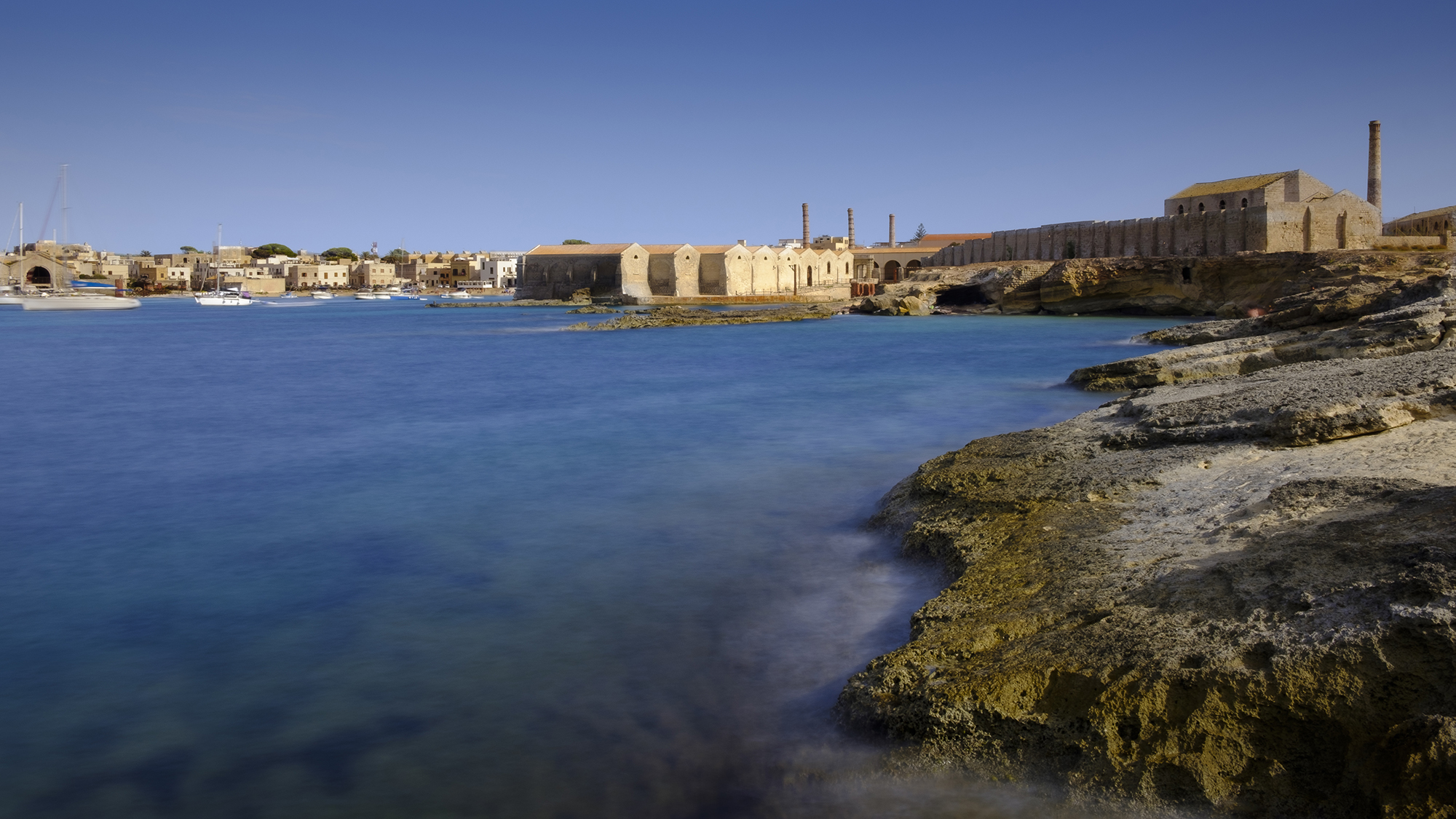In The Kingdom of Florio Between Sea, Sky And Rock
According to Novalis, a romantic poet from the late 18th century, blue is not a color but a range of tones, with the unlimited ability to fade towards white or, conversely, darken until it becomes black. A suggestive theory that can be understood in Favignana by observing the breaking of waves on a stretch of rocky coast. Because the foam, on the stones, is white, and the water, on the horizon, is black, while between these two limits, the shades of blue are infinite.
One of the most beautiful places to admire this spectacle is Cala Rossa, where the sea, framed by tufaceous rocks, has the purity of crystal on a white sand bottom. The boats that stop in the cove seem to float in the middle of the sky. It is easily accessible, and the recommendation is to move around by bicycle. Rentals are available everywhere, and in the summer, they are always open. The exploration of the island is within reach of everyone; the climbs are few and never too challenging. From the beach of Lido Burrone, convenient for those traveling with children, to Cala Azzurra, from Bue Marino to the aforementioned Cala Rossa, from Cala Rotonda to Punta Sottile, there are many stops to make. However, to say that Favignana is only sea would be reductive.
To begin with, there is a lovely village, with simple houses radiating from the port, dominated by the imposing former tuna factory. This building, recovered a few years ago and transformed into a museum, was designed by the architect Giuseppe Damiani Almeyda in 1878, at the request of the Florio family who had bought the Egadi Islands four years earlier (then, the same architect designed the beautiful villa opposite the factory, now owned by the municipality).
When, during the tuna fishing season, their luxurious yacht Sultana anchored in the port, it was all festive with hats being thrown up, people rushing and children being silenced. For the Florio family, the people of Favignana had genuine veneration. Not only were they the main employers of the community, but they were also generous and kind, sincerely in love with the island where they spent long holidays surrounded by guests and a prince-like luxury. The Favignana tuna factory was the only one in Sicily to turn into a real industry, with impressive production, of which the large and beautiful building, with its wide barrel vaulted halls, the exhibition of boats and cans, tanks, and chimneys, testifies today. A multimedia installation allows you to immerse yourself in the lives of people who worked in the tuna factory, and photos and videos narrate the various steps of this traditional fishing activity that fed a modern industry.
Then there are the quarries of limestone. Once, the extraction of this soft stone (the "tuff") was one of the main economic activities of Favignana, and ships loaded with cantona (blocks) even sailed towards North Africa. Gradually they have been abandoned, and some still are. Seen from above, they look like quarters of lunar metropolises, with skyscrapers chipped by time. From below, the effect is even more impressive, if possible. The hands of generations of "pirriaturi" (stone carvers) have engraved the walls, sculpted spires and pinnacles, and dug dark tunnels in the rock.
Some caves have been recovered and host underground gardens and orchards from which intense scents of lemon, oregano, jasmine, and peach trees emanate, and there are also projects to enhance them, for example, through the creation of a dedicated visit path. Finally, we must talk about the forts.
Of the three that originally guarded the island, San Giacomo remains, which today falls within the perimeter of a prison, and Santa Caterina, a large and picturesque ruin that stands on the highest peak of Favignana, just over three hundred meters above sea level, from which you can observe all the island's harbors (and this was its function since its medieval construction) but also the entire horizon, 360°.
Both forts are at the center of recovery projects to make them safely accessible and thus return to the public two important testimonies of the archipelago's past. A museum for Sebastiano Tusa is also set up in the former tuna fishery, called the Sebastiano Tusa Antiquarium. Here, artifacts found in the archipelago's sea are on display, thanks to Tusa's passionate research that rediscovered the exact site of the Battle of the Egadi. Among the artifacts are two precious rostra from Roman ships.
-
Information
Maria Cristina CastellucciLe Guide di Repubblica - Trapani e La Sicilia Occidentale

